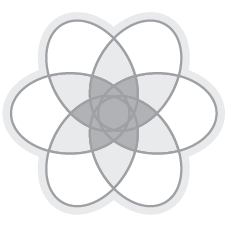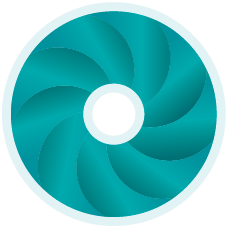2. Assess the physical and mental status of the patient (linked roles: EXP, COM, PRO)
| EPA | 2.1 | Perform an accurate and clinically relevant physical examination in a logical and fluid sequence, with a focus on the purpose and the patient’s expectations, complaints and symptoms, in persons of all ages |
| EPA | 2.2 | Assess the cognitive and mental state of the patient including memory, perception, understanding, expression and affect |
| EPA | 2.3 | Perform a physical examination in difficult situations such as obesity, intrusive procedure, non-cooperative patient, reduced consciousness, cognitive impairment and persons who do not speak the local language |
| EPA | 2.4 | Identify, describe, document and interpret abnormal findings of a physical examination. Assess vital signs (temperature, heart and respiratory rate, blood pressure) |
| EPA | 2.5 | Demonstrate patient-centred examination techniques; demonstrate effective use of devices such as a stethoscope, otoscope, ophthalmoscope; respect patient privacy, comfort, and safety |
| EPA | 2.6 | Explain physical examination manoeuvres, obtain consent as appropriate |
| EPA | 2.7 | Recognize the signs of imminent death |
Specific skills related to physical examination Students are expected to perform the tasks below on simulated or real patients. However, in some situations, in italics, only a demonstration of the technique should be expected
| EPA 2 | a. | Assessment of patient’s general condition and vital signs |
| EPA 2 | b. | Assessment of nutritional status |
| EPA 2 | c. | Assessment of attention, thought, perception, speech, affect and psychomotor skills |
| EPA 2 | d. | Evaluation of patient’s decision-making capacity |
| EPA 2 | e. | Assessment of the skin, hair and nails, description of lesions |
| EPA 2 | f. | Palpation of lymph nodes |
| EPA 2 | g. | Inspection and palpation of the orbit, eyelids and eye (all structures) |
| EPA 2 | h. | Assessment of visual acuity and visual field, as well as optic disc and retinal vessels with ophthalmoscope |
| EPA 2 | i. | Assessment of colour vision |
| EPA 2 | j. | Assessment of eye movements, recognition and description of nystagmus |
| EPA 2 | k. | Inspection and palpation of auricle and adjacent region as well as external auditory canal and tympanic membrane - hearing tests with whispering, conversational voice and tuning fork |
| EPA 2 | l. | Inspection of nose, face, mouth, salivary glands and larynx |
| EPA 2 | m. | Inspection, palpation and auscultation of cervical structures |
| EPA 2 | n. | Inspection and palpation of thyroid, carotid arteries |
| EPA 2 | o. | Inspection and palpation of skeleton and joints |
| EPA 2 | p. | Functional testing of joint mobility: shoulders, elbows, wrists, fingers, hips, knees and ankles |
| EPA 2 | q. | Inspection, palpation, percussion and mobility of the spine |
| EPA 2 | r. | Inspection and palpation of chest, percussion and auscultation of lungs |
| EPA 2 | s. | Palpation (apex beat/fremitus) and auscultation of heart; description of normal/abnormal heartbeat and murmurs |
| EPA 2 | t. | Palpation of pulse, testing for arterial insufficiency or bruits |
| EPA 2 | u. | Demonstrate ability to perform simple ultrasound investigations (suspected pleural effusion, abdominal mass, ascites) |
| EPA 2 | v. | Assessment of venous system |
| EPA 2 | w. | Palpation, percussion and auscultation of abdomen, description of findings |
| EPA 2 | x. | Inspection and palpation of groin / hernial orifices |
| EPA 2 | y. | Examination of male genitals |
| EPA 2 | z. | Rectal examination in male (anus, rectum, prostate gland, sacrum) and female |
| EPA 2 | aa. | Speculum examination: inspection of vagina and cervix |
| EPA 2 | bb. | Bimanual examination: vagina, cervix, uterine corpus, ovaries |
| EPA 2 | cc. | Palpation of breast |
| EPA 2 | dd. | Neurological examination: testing cranial nerves, reflexes, passive muscle stretch, inspection of muscle bulk, tone and strength, as well as involuntary movements, gait and balance, coordination, superficial and deep sensation, aphasia, orientation, memory |
| EPA 2 | ee. | Assessment of coma (scale) |
| EPA 2 | ff. | Examination of new-borns (Apgar score, dysmorphism, malformation) |
| EPA 2 | gg. | Assessment of age-specific anthropometric characteristics of infants / children / adolescents |
| EPA 2 | hh. | Assessment of pubertal growth (pubertal stages) |
| EPA 2 | ii. | Age-specific assessment of the child: neurological and cognitive development |
| EPA 2 | jj. | Assessment of basic and instrumental activities of daily living |
| EPA 2 | kk. | Forensic examination of persons under the influence of alcohol and/or drugs |
| EPA 2 | ll. | Documentation of physical/sexual violence |
| EPA 2 | mm. | Clinical diagnosis of death, estimation of time of death |





